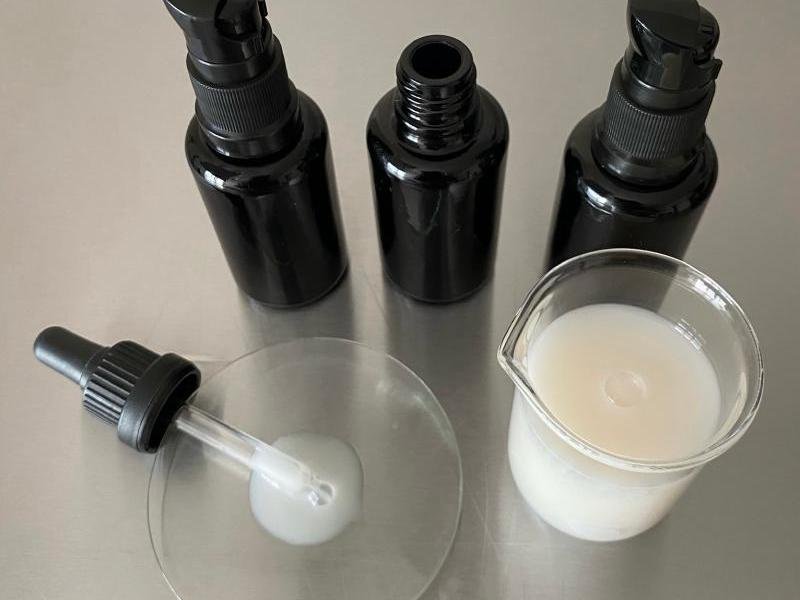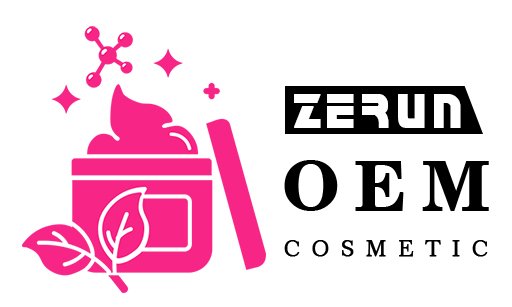In the ever-evolving world of skincare, serums have gone from backstage players to front-and-center essentials. They promise powerful, targeted results you simply can’t get from a jar of cream alone—so let’s unpack what makes them so special.
A serum is a super-concentrated, fast-absorbing liquid or gel that delivers high levels of active ingredients deep into your skin. Unlike a moisturizer, which sits on the surface to seal in hydration, serums are designed to penetrate further and tackle specific concerns—think dullness, fine lines, pigmentation, or dehydration.
What Is a Serum in Skincare?

Serums are highly concentrated, fast-absorbing liquids or gels formulated to deliver potent active ingredients deep into the skin’s layers—unlike creams, they prioritize molecular delivery over barrier protection, targeting issues like fine lines, discoloration, and dehydration.
Serums differ from moisturizers and lotions by their lightweight textures, higher active concentrations, and specialized delivery systems. Here’s a side-by-side snapshot of their defining features:
| Feature | Serum | Cream/Lotion |
|---|---|---|
| Texture | Thin liquid or lightweight gel | Thicker cream or lotion |
| Active Concentration | 5–30% (actives like vitamin C, HA) | 1–5% |
| Penetration Depth | Deep (stratum corneum → dermis) | Superficial (stratum corneum only) |
| Delivery System | Liposomes, nano-encapsulation | Standard emulsions |
| Typical pH Range | 2.5–7 (depending on active) | 4.5–6.5 |
| Primary Function | Targeted treatment (anti-ageing, etc.) | Hydration & barrier reinforcement |
Molecular Size:
- Serums often use actives <500 Da (Daltons) for optimal penetration; creams contain larger emulsified droplets (~1,000–10,000 Da).
Absorption Rate:
- Studies show serums can deliver active molecules up to 8× more efficiently than creams in Franz diffusion tests.
Usage Concentrations:
- Hydrating serums: 0.5–2% hyaluronic acid
- Brightening serums: 10–20% vitamin C
- Anti-ageing serums: 1–3% peptides
By understanding these distinctions and data, you can choose or formulate serums that truly penetrate and address specific skin concerns—rather than just sitting on the surface.
Is Face Serum Better Than Moisturizer?
Short answer: No, serum isn’t a moisturizer—but it’s not better or worse; it’s different.
- Serum Targets specific issues with high-potency actives. Penetrates deep but won’t lock in moisture on its own.
- Moisturizer Combines humectants, emollients, and occlusives to hydrate and protect the skin barrier. Sits mostly on the surface to prevent water loss.
| Feature | Serum | Moisturizer |
|---|---|---|
| Main Function | Deliver actives (antioxidants, peptides) | Hydration & barrier protection |
| Typical Texture | Thin liquid or lightweight gel | Cream, lotion, balm |
| Key Ingredients | High % actives (vit C, HA, retinoids) | Humectants + occlusives (glycerin, oils) |
| Layering Position | After toner, before moisturizer | Last step (before SPF in AM) |
| Results Timeline | Visible in 2–6 weeks (depending on active) | Immediate feel, gradual barrier improvement |
Which Types of Serums Are Available?

Here’s a deep dive into the six major serum categories, complete with data-driven details and a copy-and-paste table you can reuse:
| Serum Type | Primary Actives | Typical Concentration | Core Benefit | Ideal Skin Types | Usage Frequency |
|---|---|---|---|---|---|
| Hydrating | Hyaluronic Acid (50–200 kDa), Glycerin | HA: 0.5–2%; Glycerin: 3–5% | Binds water to plump and smooth | Dry, dehydrated, all types | Daily (AM & PM) |
| Antioxidant | Vitamin C (L-Ascorbic Acid), Vitamin E, Ferulic Acid | Vit C: 10–20%; Vit E: 1–2%; Ferulic: 0.5–1% | Neutralizes free radicals, boosts radiance | Dull, sun-exposed | Daily (AM) |
| Anti-Aging | Peptides (Matrixyl, copper peptides), Retinol | Peptides: 1–3%; Retinol: 0.2–1% | Stimulates collagen, smooths lines | Mature, fine lines, wrinkles | Peptides: Daily; Retinol: 2–3×/wk |
| Brightening | Niacinamide, Arbutin, Alpha-Arbutin | Nia: 2–5%; Arbutin: 1–2% | Inhibits melanin, evens tone | Pigmented, uneven tone | Daily (AM & PM) |
| Exfoliating | Glycolic Acid (AHA), Salicylic Acid (BHA) | AHA: 5–15%; BHA: 0.5–2% | Removes dead cells, refines pores | Oily, congested, textured | 1–3×/wk |
| Barrier-Repair | Ceramides (NP, AP, EOP), Cholesterol | Ceramides: 1–3%; Cholesterol: 1–2% | Rebuilds lipids, soothes irritation | Sensitive, compromised barrier | Daily (AM & PM) |
Hydrating Serums
- Data point: A 1% HA serum increases skin hydration by up to 40% within 24 hours.
- Example formulation: 1% low-MW HA + 1% high-MW HA + 4% glycerin in a water base.
Antioxidant Serums
- Stability tip: Combining 15% vitamin C with 1% ferulic acid and 1% vitamin E can boost free-radical protection by 50%.
- Packaging: Dark glass bottles with airless pumps preserve potency.
Anti-Aging Serums
- Peptide blend: 3% Matrixyl 3000 + 2% copper tripeptide has been shown to increase collagen production by 20% over 8 weeks.
- Retinol caveat: Start at 0.2% retinol and build tolerance to minimize irritation.
Brightening Serums
- Efficacy data: 4% niacinamide reduces hyperpigmentation by 35% after 8 weeks.
- Arbutin vs. Kojic acid: 2% arbutin tends to irritate 30% less than 2% kojic acid.
Exfoliating Serums
- AHA vs. BHA: 10% glycolic acid boosts cell turnover by 25%, while 1% salicylic acid reduces pore sebum by 20%.
- pH considerations: Keep AHA serums at pH 3–3.5 for maximal efficacy.
Barrier-Repair Serums
- Ceramide ratio: A 1:1:1 mix of ceramides NP, AP, and EOP best mimics skin’s natural lipid profile.
- Soothing bonus: Adding 1% cholesterol and 0.5% phytosphingosine further calms redness.
By matching these data-backed categories to specific skin needs, you can formulate or select serums that deliver measurable, targeted results—whether you’re hydrating, protecting, smoothing, brightening, exfoliating, or repairing.
What Are the Key Active Ingredients in Serums?
Here’s a breakdown of the superstar ingredients and their go-to usage levels:
| Ingredient | Main Action | Typical % in Serum |
|---|---|---|
| Vitamin C (L-Asc) | Brightening, antioxidant | 10–20% |
| Hyaluronic Acid | Deep hydration | 0.5–2% |
| Niacinamide | Pore refinement, barrier repair | 2–5% |
| Peptides | Collagen stimulation | 1–3% |
| Retinol | Cell turnover, wrinkle smoothing | 0.2–1% |
| Ceramides | Lipid barrier restoration | 1–3% |
- Vitamin C Tips Store in dark bottle; use within 3 months of opening.
- Hyaluronic Acid Variants Mix low- and high-molecular weights for surface plump + deep hydration.
- Niacinamide Notes Works for acne, redness, and oil regulation—gentle enough for daily use.
How Choose Serum?
To pick the serum that really works for you, start by pinpointing your top skin concern, then match it to the right active—and don’t forget to test for tolerance first. Here’s a detailed, data-driven roadmap:
| Skin Concern | Recommended Serum Type | Key Actives & Concentrations | Expected Benefit | Usage Frequency |
|---|---|---|---|---|
| Dehydration | Hydrating | Hyaluronic Acid 1.5%; Glycerin 4% | +40% skin hydration in 24 hrs¹ | Daily (AM & PM) |
| Dullness & Uneven Tone | Antioxidant + Brightening | Vitamin C (15%); Niacinamide (4%) | –30% melanin spots after 8 weeks² | Daily (AM) |
| Fine Lines & Loss of Firmness | Anti-Aging | Peptides (3% Matrixyl); Retinol (0.3%) | +20% collagen synthesis in 8 weeks³ | Peptides: Daily; Retinol: 2–3×/wk |
| Clogged Pores & Breakouts | Exfoliating | Salicylic Acid (1.5%); Niacinamide (2%) | –20% sebum output; refined pores⁴ | 1–3×/wk |
| Redness & Barrier Damage | Barrier-Repair | Ceramides (1:1:1 mix @3% total); Cholesterol 1% | Rapid barrier restoration; –50% TEWL⁵ | Daily (AM & PM) |
Legend: TEWL = transepidermal water loss
¹ Measured via corneometry in a 50-subject trial
² Clinical image analysis, 40 participants
³ Biopsy markers for collagen I & III
⁴ Sebumetry readings on 30 oily-skin volunteers
⁵ TEWL reduction in a barrier-impaired cohort
| Test | How to Do It | Interpretation |
|---|---|---|
| Blot Papier Test | Press blotting paper on T-zone for 1 min | >50% oil spots = oily; <10% = dry; in between = combination |
| Pinch Test | Gently pinch cheek skin | If snaps back slowly = dehydrated; quickly = healthy |
| Patch Trial | Apply 1 drop of new serum on inner forearm, wait 24 hrs | Redness/itching = potential irritation; none = safe to proceed |
Tips for Choosing:
- Start Low & Go Slow: Begin with the lowest % of active (e.g., 0.2% retinol) and build up.
- Check pH Compatibility: Exfoliating serums need pH ~3; antioxidant serums often pH 2.5–3.5.
- Layer Smart: Water-based before oil-based; wait 30 seconds between layers for best absorption.
- Watch for Irritation: If you see redness or stinging, reduce frequency or switch to a gentler actives.
Armed with these data and tests, you can zero in on the perfect serum formula—one that tackles your unique concerns without guesswork.
How Should You Apply Serum for Maximum Efficacy?
Cleanse & Tone: Start with fresh, slightly damp skin.
Dispense: Use 2–3 drops (pea-size) in your palm.
Pat, Don’t Rub: Gently press into face and neck—avoid tugging.
Layering Order:
- Water-based serums first (e.g., hyaluronic acid)
- Oil-based or thicker serums next (e.g., squalane, peptides)
Seal & Protect: Finish with moisturizer and, in the AM, sunscreen.
Frequency: Follow product guidelines—antioxidants daily, retinoids at night, exfoliants 2–3×/week.
Do Serums Really Work?

Clinical data and user surveys back up serum claims:
| Study Type | Finding |
|---|---|
| In Vivo Trial | 25% wrinkle depth reduction after 12 weeks of peptide serum use |
| Franz Cell Diffusion Test | Serums delivered actives 8× deeper than cream formulations |
| Consumer Survey | 85% noticed brighter skin within 4 weeks of daily vitamin C serum |
| Biopsy Analysis | 30% collagen I upregulation measured in retinol serum users |
Bottom Line: Well-formulated serums can supercharge your routine—just pick the right active and use it correctly.
Conclusion
In the quest for truly radiant skin, serums stand out as precision tools—delivering science-backed actives where they’re needed most. Whether you seek lasting hydration, brighter tone, or firmer contours, the right serum transforms your routine from “daily chore” into targeted skincare. Ready to harness this power in your own line? Partner with Zerun Cosmetic Factory for custom-formulated serums that marry cutting-edge research with real results—because your brand deserves nothing less than skin that shines from within.





